Also available in: Deutsch
Nearly 50 kilometers southeast of Hamburg lies the Hanseatic city of Lüneburg. The town was once part of the Hanseatic League, and especially today a day trip to Lüneburg is definitely worth it. Because among old lanes, restaurants, and cafes, there are many great sights in Lüneburg.
Lüneburg: 15 Sights and Tips
- How to Get to Lüneburg
- Accommodation in Lüneburg – Our Hotel Tip
- 1. Wasserturm (Water Tower) and View
- 2. St. Johanniskirche (St. John’s Church)
- 3. Am Sande
- 4. Alleys in the Subsidence Area (Senkungsgebiet)
- 5. St. Michaelis Church
- 6. Kalkberg with View
- 7. Old Town Hall and Market Square
- 8. The “Pregnant House” (Das Schwangere Haus)
- 9. Bäckerstraße
- 10. Old Town Pharmacy
- 11. Stintmarkt and Old Crane
- 12. German Salt Museum
- 13. Kurpark
- 14. Brömsehaus
- 15. Walk Along the Ilmenau
- Futuristic Tip: Central Building of the University
- Winter Tip: Christmas Market
We have known the city for a long time and have put together some tips for Lüneburg. Tobi was even born in Lüneburg, and we’re often there, also because friends of ours live there. So if you spend some time in the north or an extended weekend there, a visit to Lüneburg is just as worthwhile as, for example, in Lübeck.
How to Get to Lüneburg
You can’t fly directly to Lüneburg, but if you’re heading to northern Germany, Hamburg or Hannover airports are the nearest. You can find tickets and info for flights there on Skyscanner.
You can also reach Lüneburg easily with the Deutsche Bahn. The city is served by the Metronom (a regional express), the Interregio‑Express, or the ICE. This means there are good connections from Hamburg, Hannover, and even Berlin. You can find a good overview of prices and schedules on Omio.
Another way to travel to Lüneburg is by car. The city is connected to the A39 motorway, which leads to the A1 via the Maschener Kreuz. But you can also come from the south via the A7 with a junction on B209.
Tip: For a large parking lot, drive to the Sülzwiesen. There you can park for free and reach the city center in about a 10‑minute walk.
Accommodation in Lüneburg – Our Hotel Tip
Not far from the town hall is the Wyndberg Hotel, in a great location for exploring many of Lüneburg’s sights by foot. The accommodation welcomes guests with a beautiful garden, a restaurant, a bar, and nicely furnished rooms, some with their own terrace. The hotel also offers bike rental – because Lüneburg can also be wonderfully explored by bicycle.
You can find other hotels in Lüneburg in various price ranges here.
1. Wasserturm (Water Tower) and View
The water tower is our first recommended sight in Lüneburg. Built between 1905 and 1907, the tower was in operation until 1986. Today, you can enjoy a great view over the old town of Lüneburg from the 56‑meter‑high tower.
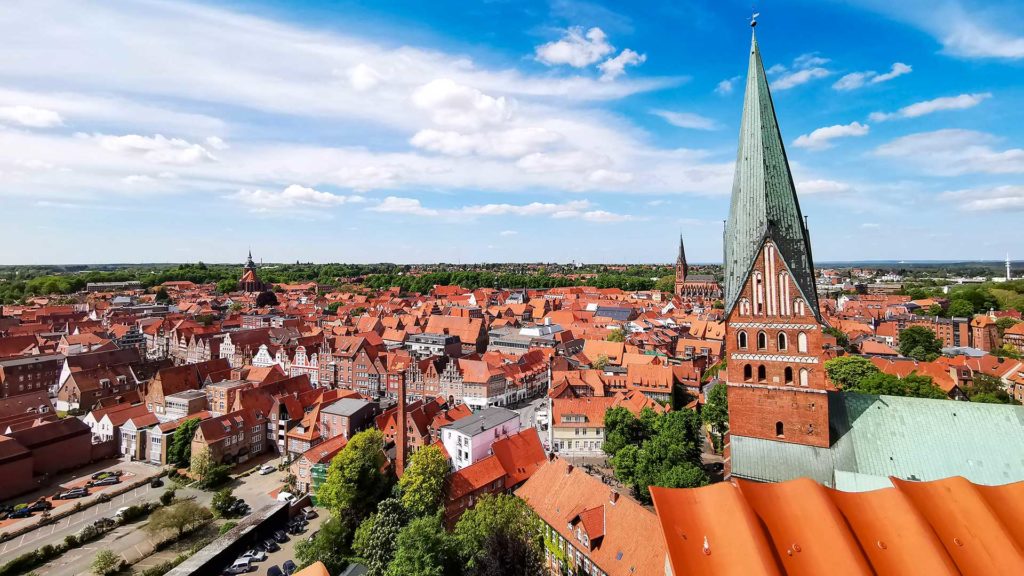
You can take an elevator to the 6th floor and then reach the observation platform via a few more steps. Occasionally, tours are offered, so you can learn about the tower’s history. Standard tickets cost €5 per person, and it is open daily from 10.00 AM to 07.00 PM.
2. St. Johanniskirche (St. John’s Church)
The construction of St. Johanniskirche was completed in 1470, making it the oldest church in Lüneburg. The church on the Sande, together with two others (St. Michaelis and St. Nicolai), is a major example of Brick Gothic architecture in Europe.
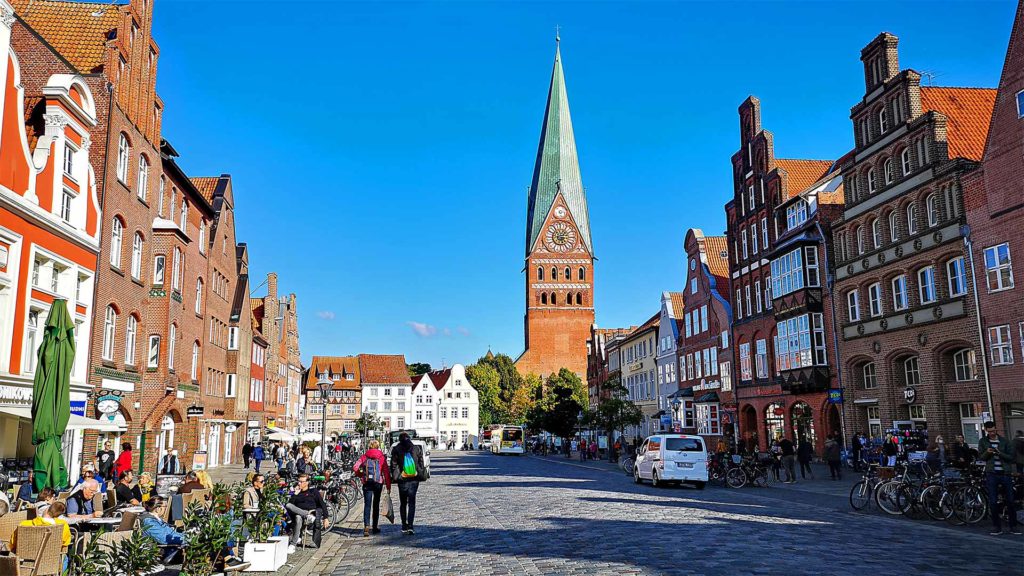
Visitors can also view the interior of the church for free during daylight hours, unless there are services. No entrance fee is required.
3. Am Sande
Am Sande is a large square in Lüneburg’s old town. One side is dominated by the St. Johanniskirche, the other by the beautiful building of the Chamber of Industry and Commerce (built in 1548). On both sides you can see many gabled houses that give the old town its charm.
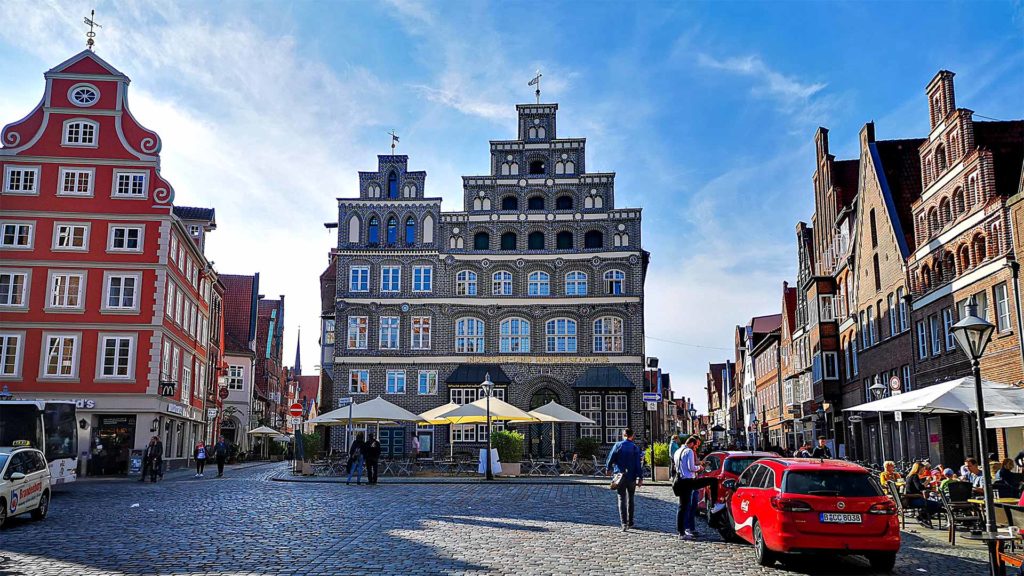
The name Am Sande comes from the fact that the square was originally unpaved and made of sand. On the 225‑meter‑long square, you’ll now find several restaurants and shops, and sometimes fairs and other festivals take place here.
Tip: If you enter the street by McDonald’s, the Mälzer restaurant is on the left. They serve good German cuisine and house‑brewed beer. In good weather, you can also sit on the terrace directly in front of the IHK building.
4. Alleys in the Subsidence Area (Senkungsgebiet)
The area of the old town between the German Salt Museum (see point 12) and the Kalkberg (point 6) is also known as the subsidence area. Here stand picturesque old houses with beautiful facades, but they have a problem: beneath this part of the old town lies the Lüneburg saltworks, where salt was mined for centuries just below the surface.
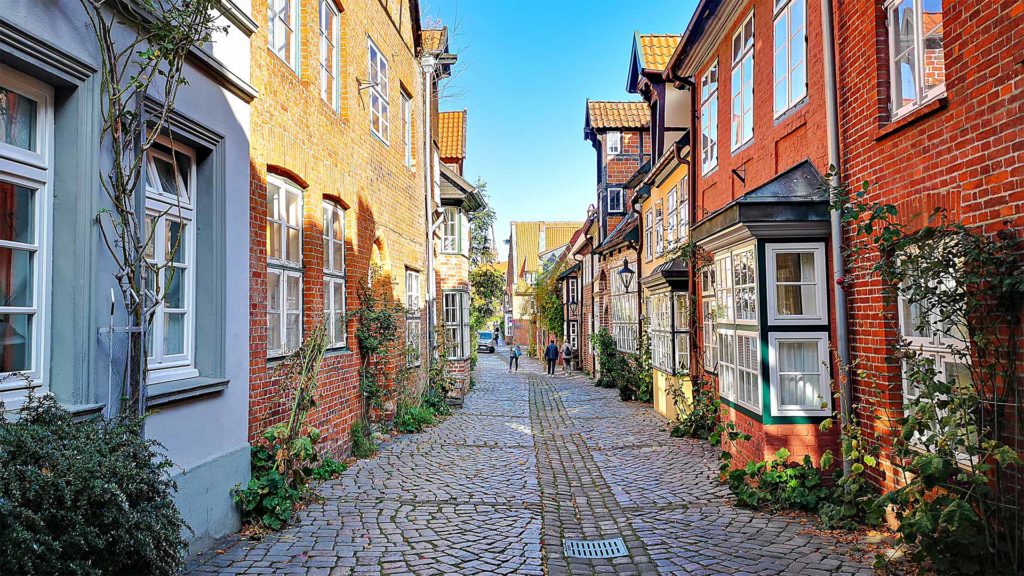
Due to the salt mining beneath this part of the old town, it sinks by about 13 cm each year. This causes some houses to crack or even become uninhabitable. Others have stabilized their buildings with steel beams or similar to halt or slow this sinking process.
As you walk along the alleys in the subsidence area, you will repeatedly notice that some facades are crooked. This is also true of the St. Michaelis Church (see the next point). One street where this is very noticeable is “auf dem Meere.”
5. St. Michaelis Church
In addition to St. Johanniskirche, St. Michaelis Church is one of Lüneburg’s main churches. It is a former monastery church built in the 14th century. Its nickname is Bachkirche because the famous composer Johann Sebastian Bach lived there from 1700 to 1702 for two years as a student of the Michaelis monastery.
Like point 2, this church is also a notable example of Brick Gothic architecture. It is open daily for visitors free of charge, except during services. You are welcome to attend those, but you can’t explore the church at those times.
6. Kalkberg with View
The Kalkberg lies near Lüneburg’s old town and is actually a hill consisting of gypsum. Originally about 80 meters high and much wider, gypsum was quarried over the centuries and used as building material.
Mining at the Kalkberg ceased in 1923, and in 1932 the hill and surroundings were declared one of Germany’s first nature reserves. Today, you can climb the still nearly 56‑meter-high Kalkberg via a staircase.
At the top, there is a beautiful view over the nature reserve and parts of the old town, making it a tourist attraction in Lüneburg. Incidentally, a castle stood here from the mid‑10th to the 14th century. The cannon on the hill, however, is from a later time. It was only fired if someone escaped from the nearby prison.
7. Old Town Hall and Market Square
Lüneburg’s old town hall was built around 1230 and was expanded over the centuries, so you can identify different architectural styles in the building. This makes it an interesting Lüneburg landmark and one of northern Germany’s most important town halls.
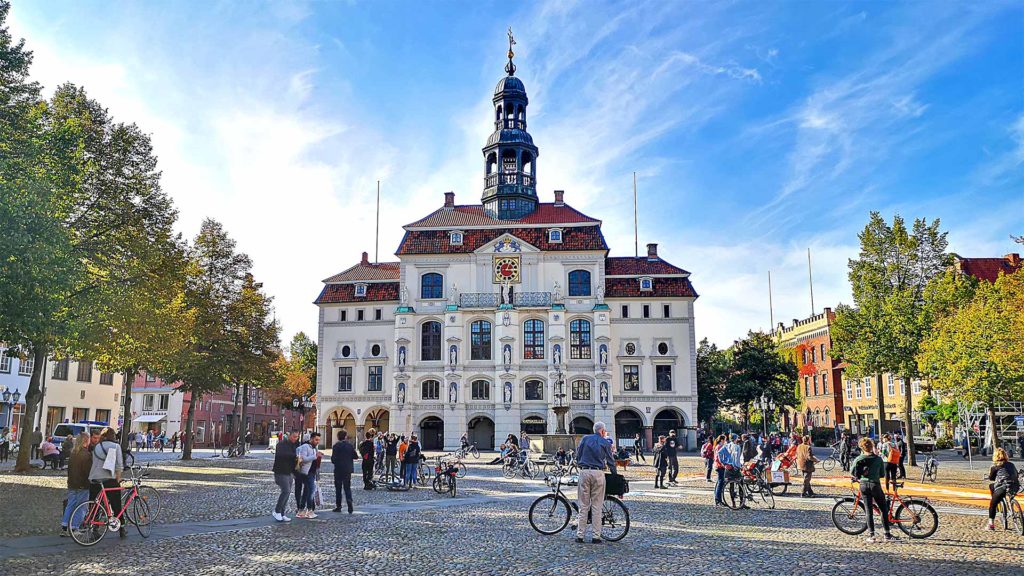
The front facade, which you see from the market square, is built in Baroque style. Other parts are in Renaissance or Gothic style. It is still actively used today and houses Lüneburg’s administration. You can take daily tours of the town hall for a price of €5. You can book dates here.
On the market square in front of the old town hall, you can also find the weekly market on Wednesday and Saturday mornings. They offer a variety of regional products, and if you’re in town on those days, it’s worth combining the visit with the old town hall.
8. The “Pregnant House” (Das Schwangere Haus)
Directly to the left of the town hall (as viewed from the front) is the Pregnant House on Waagestraße. Why it’s called the Pregnant House will be clear at first glance. But why does the wall bulge outward?
When the house was built, workers used gypsum and anhydrite as a mortar substitute. However, this combination reacts to moisture and starts a chemical process that makes the wall bulge outward because it increases in volume.
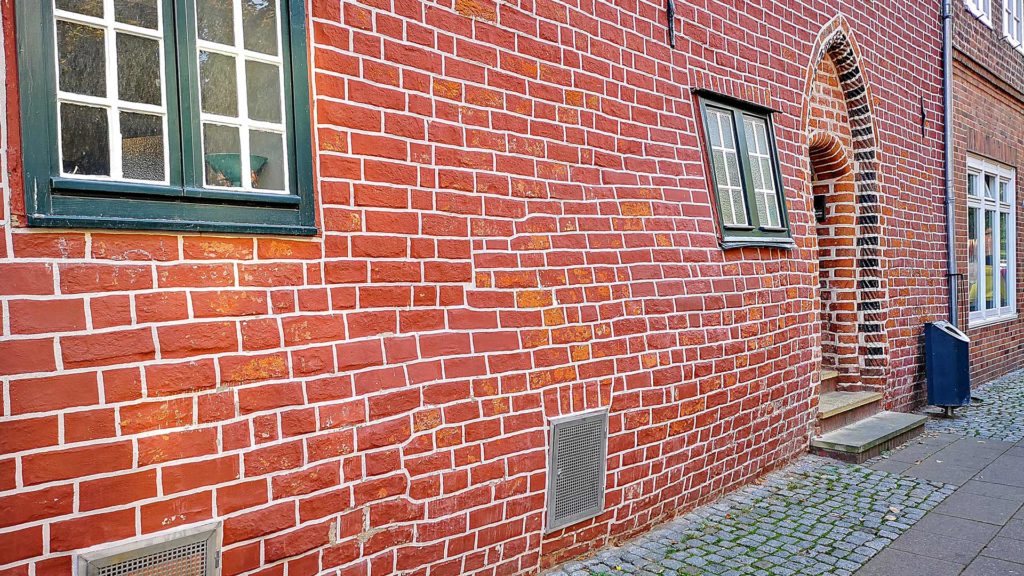
The Pregnant House is definitely one of quirky sights in Lüneburg. If you’re visiting the city center, you can stop here for a quick photo.
9. Bäckerstraße
Bäckerstraße is Lüneburg’s shopping street and runs through a pedestrian zone from the market square at the town hall to Am Sande. There you’ll find many shops to browse, as well as small boutiques, restaurants, cafes, and bars in the side alleys.
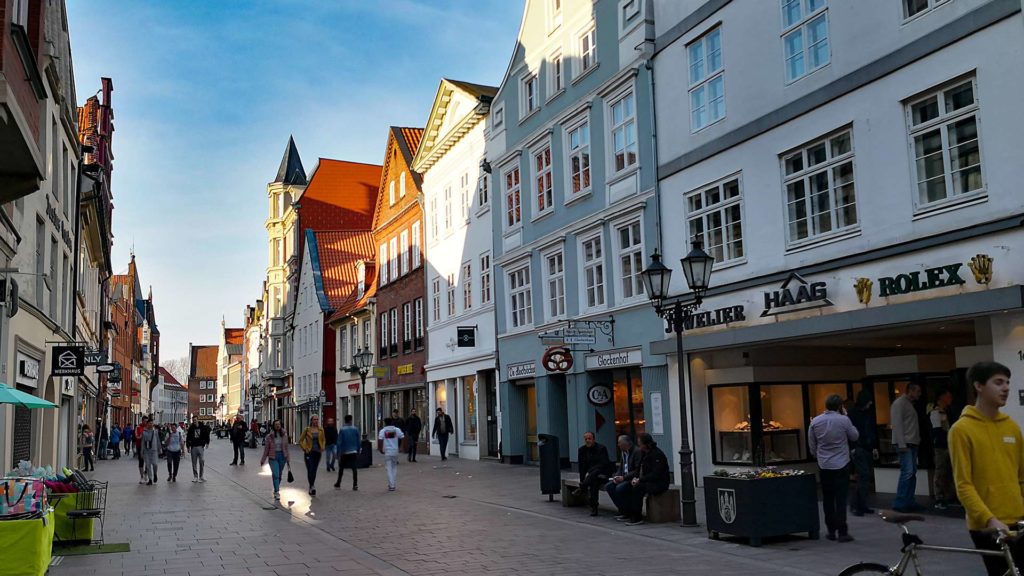
Located right in the charming old town, you can not only see the Lüneburg sights but also shop if you’re in the mood. During your stroll through Lüneburg, you’ll almost certainly pass through here.
10. Old Town Pharmacy
Also on Bäckerstraße is the Old Town Pharmacy (formerly spelled Raths‑Apotheke). The building was constructed in 1598 or renovated from the original structure and is now a listed monument.
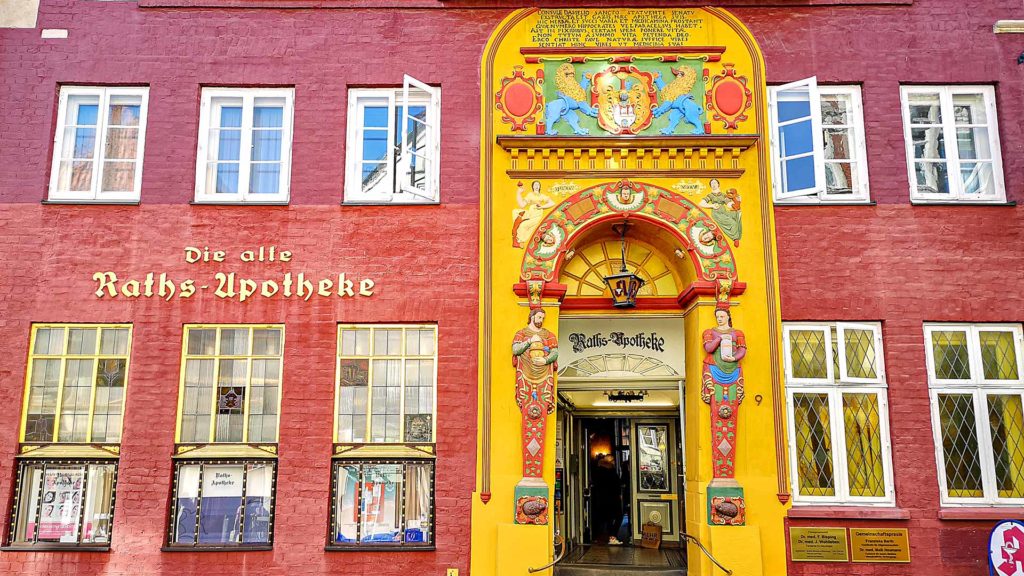
Over the years, the old town pharmacy has been frequently restored and received its original paintwork again in 1988/1989. Today the pharmacy still operates and stands out with its impressive entrance portal when visiting Bäckerstraße.
11. Stintmarkt and Old Crane
Stintmarkt lies in Lüneburg’s water quarter and gets its name from the fact that the fish called “Stint” was once traded here. Today, the Stintmarkt, as it’s commonly called, is a nightlife district in Lüneburg.
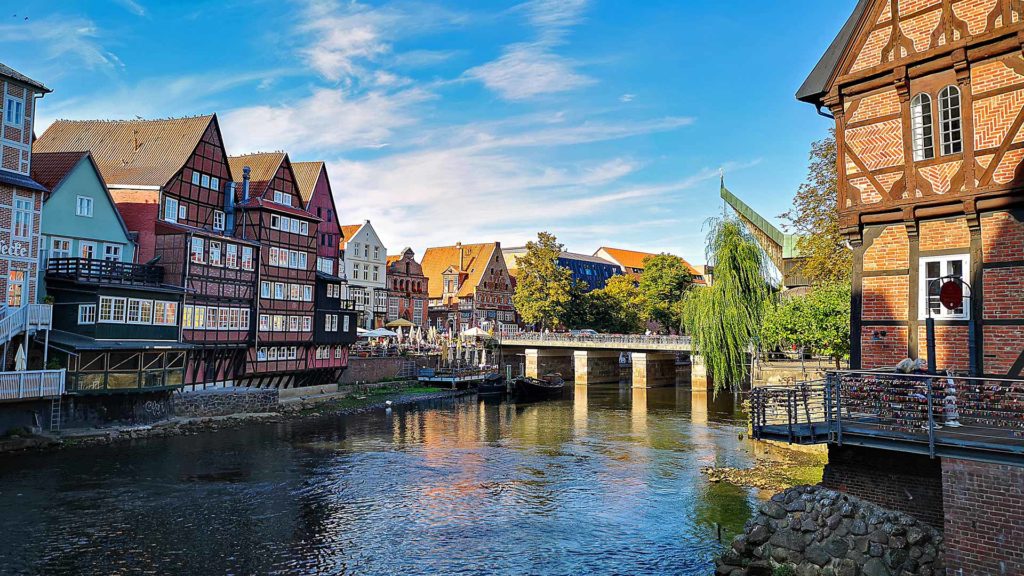
In the well‑preserved gabled houses are many bars and restaurants that attract many guests, especially in the summer months. You can sit by the water and enjoy your drink or meal in the sun. But evenings are lively here too – especially the Irish pub is popular, and nearly every weekend live music is played there. A great tip if you love Guinness and good music!
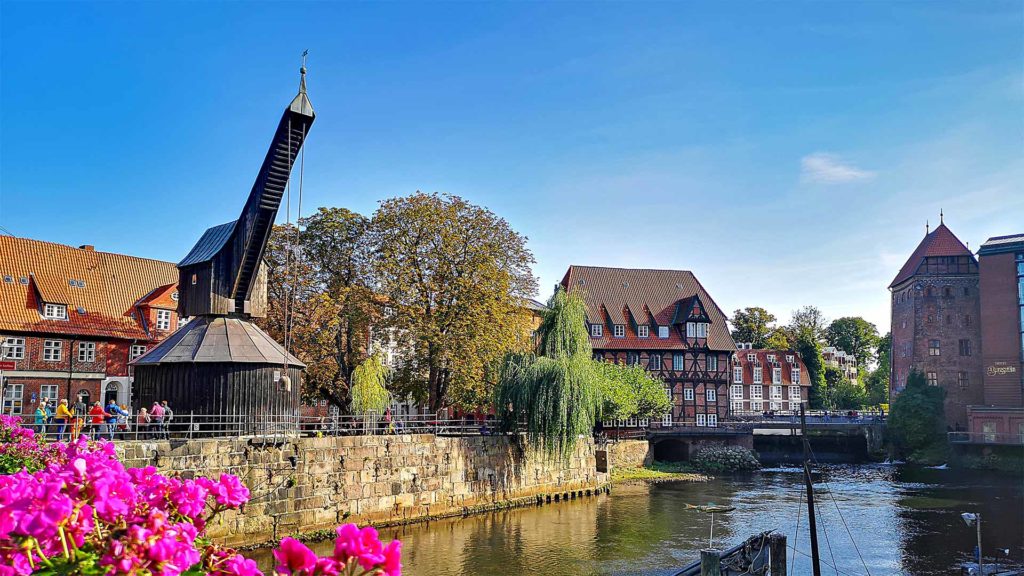
Another Lüneburg sight and city landmark is the old crane. It was built in 1797 and was used for many years to ship salt, as it stood at the former Ilmenau harbor. Nowadays it no longer serves a function, but remains a lovely photo subject.
12. German Salt Museum
The German Salt Museum is another attraction in Lüneburg. Here you can learn a lot about the city’s history, which is closely linked to the salt trade. Until 1980, the site of the German Salt Museum was occupied by the Lüneburg Saltworks (German: Lüneburger Saline), a salt production facility.
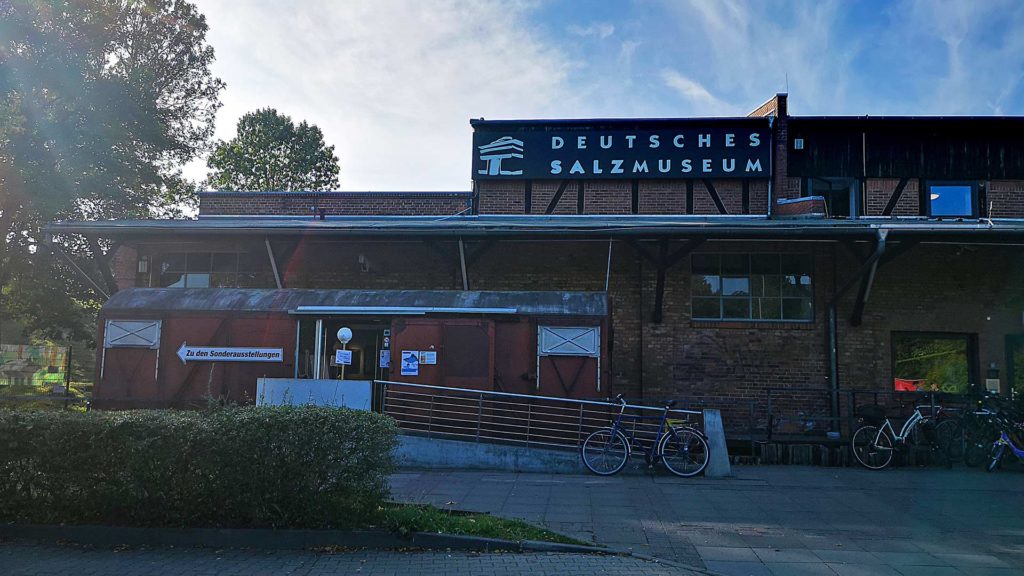
The salt history of Lüneburg can be explored in various exhibitions about the Middle Ages, the 19th or 20th century, and you can discover how Lüneburg became rich and powerful through salt. It is open from 10.00 AM to 05.00 PM Tuesday through Sunday. Entrance costs €8.00 for adults or €9.50 including a tour. Further info is available on the website of the German Salt Museum.
13. Kurpark
The Kurpark is a park laid out in the style of English gardens, in existence since 1907. The 23‑hectare area offers plenty for visitors. Large lawns, benches, cafes, a Kneipp basin, and the graduation tower.
The heritage‑protected graduation tower is particularly interesting. From the five‑meter‑high structure, salt brine flows through blackthorn brushwood into the air. Originally built as a spa facility and expanded in 1927, this is especially great for respiratory problems, and you can sit on the benches in front and breathe in the fresh, healthy air.
14. Brömsehaus
If you walk from Am Sande toward the Stintmarkt, you can also take a quick look at the Brömsehaus. It was built between 1406 and 1426. Its current appearance dates from 1637.
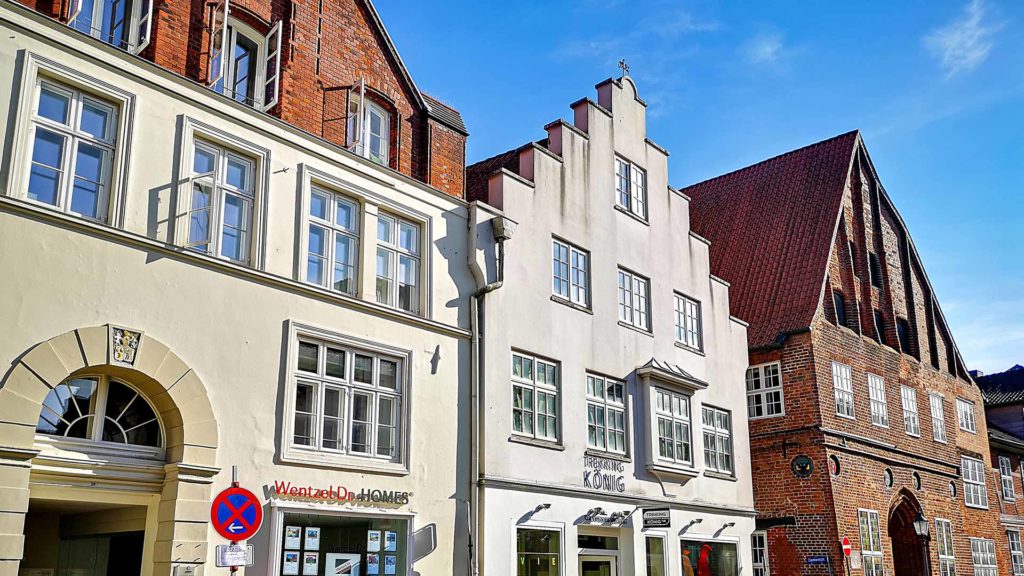
The Brömsehaus is one of Lüneburg’s oldest townhouses and is now a listed monument. It is owned by the German‑Baltic Cultural Foundation. It is used, among other things, for events, seminars, or lectures. Sometimes guided tours take place, more info is available here.
15. Walk Along the Ilmenau
The Ilmenau is a river in the Lüneburg Heath and also flows through the city of Lüneburg. Parts of it belong to the nature reserve Lüneburg Ilmenau Lowland with Animal Park. Therefore, walking along the Ilmenau is perfect if you want to get out of the city and enjoy nature.
Here you can walk along the Ilmenau and in the summer also swim in the river, go kayaking, or have a picnic on the bank. If you go opposite the central building of Leuphana University (see next point) toward the Ilmenau, you’ll find many peaceful spots that attract many students, especially in the summer.
Futuristic Tip: Central Building of the University
Since 2017, the central building of Leuphana University in Lüneburg has stood here. Designed by architect Daniel Libeskind, who also designed, for example, the Imperial War Museum North in Manchester or the Złota 44 skyscraper in Warsaw, the modern and futuristic building catches the eye.
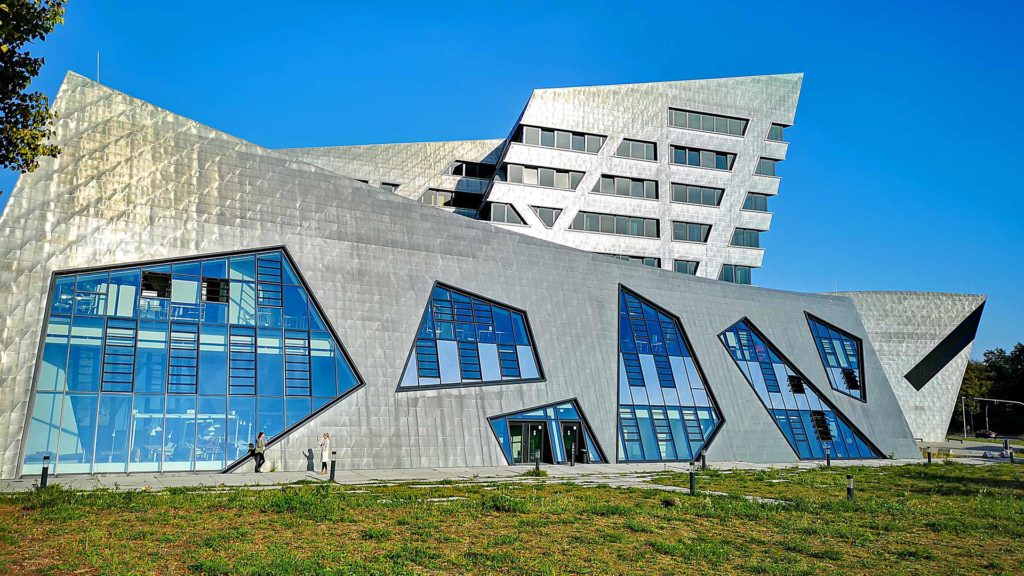
Inside, there is a huge auditorium for 1200 people, a cafeteria, seminar rooms, and a research center. However, the central building is not located in the city center, but on Universitätsallee/Uelzener Straße, which leads toward federal highway 4.
Winter Tip: Christmas Market
Every year from late November until just before Christmas, the popular Lüneburg Christmas markets take place. Three markets stand out in particular – at the town hall, at the old crane of the Stintmarkt and at the St. Johanniskirche. When visiting Lüneburg during the Christmas season, you can explore all three since they are not far apart. The largest of these markets is the one at the town hall.
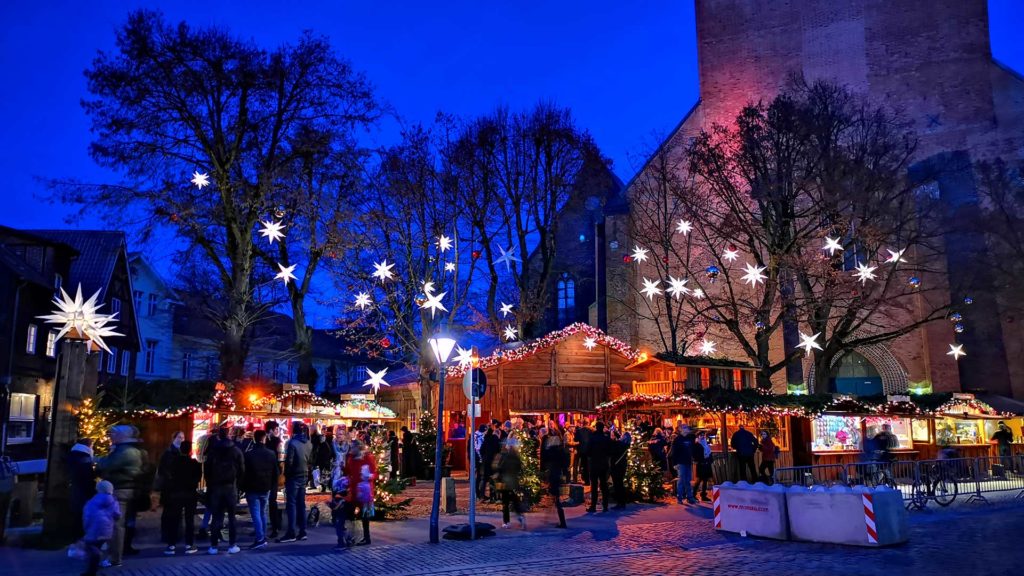
From delicious mulled wine to various foods and carousels for children, the Lüneburg Christmas markets are a popular destination. All are open daily from 10.00 AM to 08.00 PM. More info about the Christmas markets in Lüneburg can be found here (currently only available in German).
Plan your trip to Lüneburg now
More hotel recommendations for Lüneburg:
- Highlight: Anno 1433
- Old Town: Wyndberg Hotel
- Rotes Feld: Best Western Plus Residenzhotel
- Hagen: anders Kontorhaus
Popular routes to Lüneburg:
Have you ever visited Lüneburg? Do you have any more tips or suggestions for Lüneburg sights and things to do? We’re looking forward to your feedback in the comments.

Tobi
Hi, I'm Tobi, author, passionate travel blogger and founder of this blog. I've been traveling the world a lot since 2013, mostly in Southeast Asia, but sometimes also in Europe. The Thai island of Koh Phangan has become my home base when I'm not traveling. Find out more on our About Us page.